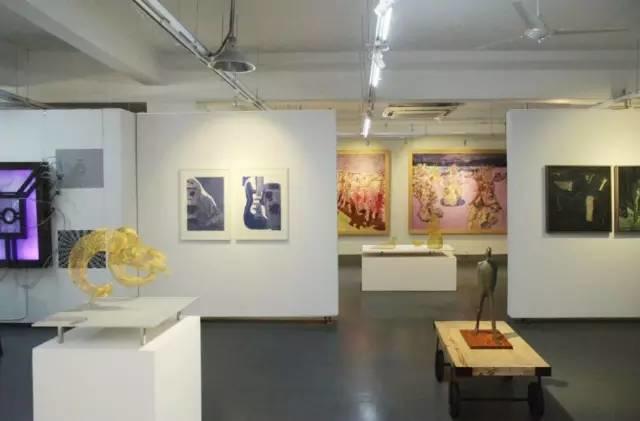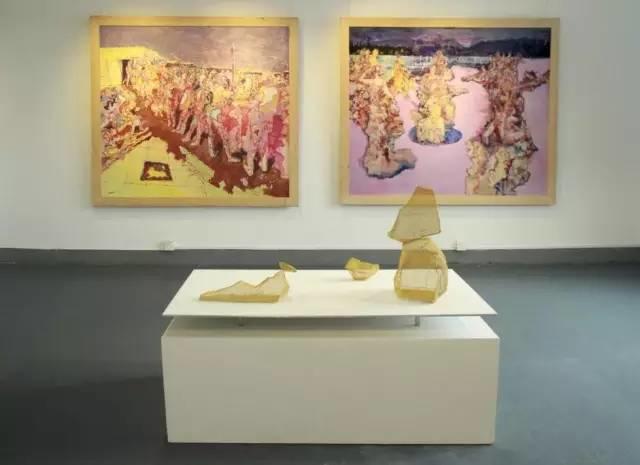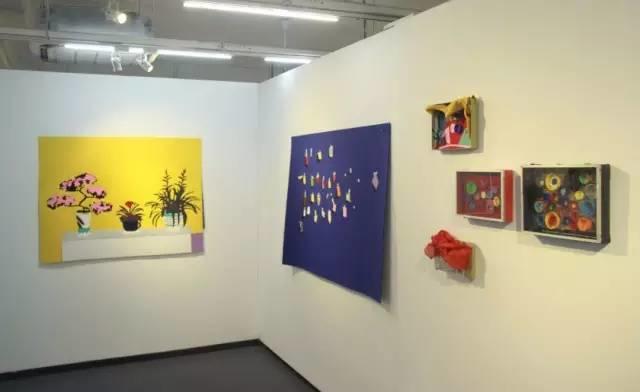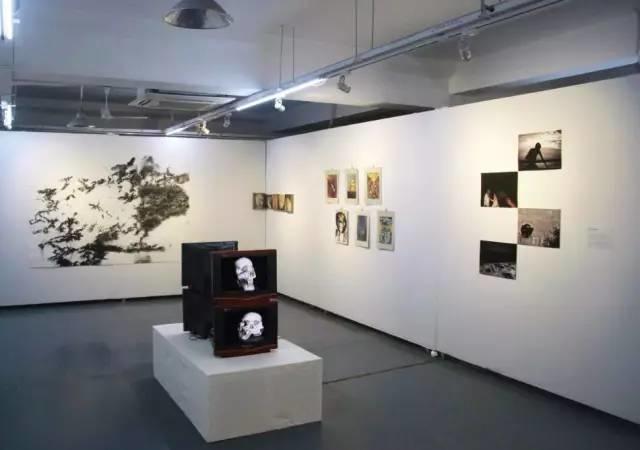【展讯】群展:云涌覆
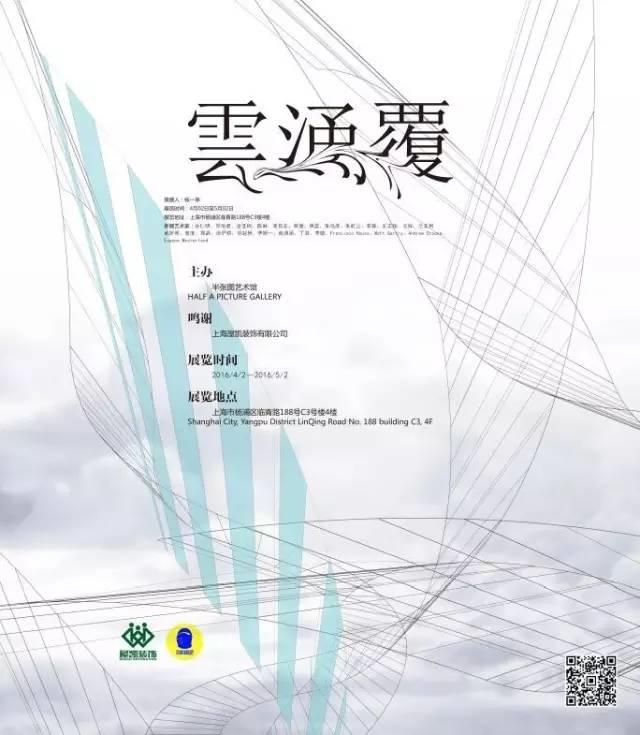
CURATOR:Yicheng Zhang
策展人:张一琤
PROJECT DIRECTOR:Li Liu
项目总监:柳力
开幕酒会:2016/4/2(周六),18:00-21:00
展览时间:2016/4/2-2016/5/2,每天10:00-18:00
展览地址:上海市杨浦区临青路188号C3号楼四楼
主办:半张图艺术馆
鸣谢:上海屋凯装饰有限公司
艺术家:谷仁明、邓悦君、金亚楠、陈琳、周易非、周健、黄晨、朱泓彦、朱屹立、李舜、王志频、王辉、兰友利、武妍希、度度、郑晶、涂俨耕、倪越慧、李斯一、南渊涵、丁澂、李璐、Francisco Hauss、Matt Gartry、Andrew Stooke、Eugene Westerland
OPENING RECEPTION:2nd April,2016,18:00-21:00
DURATION:2nd April-2nd May,2016, 10:00-18:00
EXHIBITION VENUE: HALF A PICTURE GALLERY / LinQing Road 188 building C3-4F, Yangpu District,Shanghai.(Close to Metro Line 12)
ARTISTS: Renming Gu,Yuejun Deng,Yanan Jin,Lin Chen,Yifei Zhou,Jian Zhou,Chen Huang,Hongyan Zhu,Yili Zhu,Shun Li,Zhipin Wang,Hui Wang,Youli Lan,Yanxi Wu,Waverly,Jing Zheng,Yangen Xu,Yuehui Ni,Siyi Li,Yuanhan Nan,Cheng Ding,Lu Li,Francisco Hauss,Matt Gartry,Andrew Stooke,Eugene Westerland
序言
近乎有五百年的时间欧洲绘画与艺术的主要目标是模仿自然。那些艺术的实践者与理论家认为模仿必须基于科学的原则,并从两个向度中寻找启发与指引——透视的几何科学和色彩的物理科学。他们所希求模仿的自然看似是自然界的人与物,实则以物质形式将“人之造化”展开的天地人神四重合一带向显现与发生,古希腊称之为“涌现”(φύσις)。这是艺术形式得以聚集而来的隐喻:天空委予人类凭古远眺之境域,晚钟将作为有朽的人类带到神性,用具将有朽者系缚向大地。其中两组对立因素:“大地与天空”之际关涉着人类的事物得以发生的场域;“有朽者与神性”,是作为世界中有限存在的人类与它而俨然对立的镜像“永恒”无尽对话的诘因。
涌现与倾覆,天空一味地揭示与大地一味地遮蔽将世界与物的二重性召唤向前。一系列得到命名与赋形的事物将天空和大地,有朽者和神性者聚集向它们自身,我们开始探听这命名世界与物的之间时所发出的共鸣——作为存在本身的二重性,终于随着海德格尔声称“语言作为寂静之鸣响而说话”,世界与物相互进入到另者中从而逗留与静息。前进与后退、决裂和反动、平衡和力量铭划下创造的轨迹,如果这些也作为艺术本体的二重性在鸣响:哥特高咏宗教情怀的飞岩扶垛召唤着和谐理性的人本主义复兴、推崇感受性与动感的巴洛克召唤着结构对称稳定的普桑范式、印象色彩的发现作为主题本身召唤着塞尚对形式深度的再塑、结构主义对“形式即意味”的扩展召唤着杜尚对艺术必然崇高的抹消。
联觉与延伸,当今绝大多数艺术家都希望通过自己的艺术、社会和话语实践来宏观地讨论整个世界,包括物质的和非物质的形式:雕塑、装置、绘画、行为、电影和录像、参与系统、甚至是象征性的或有意义的生命形式和研究。而这又是一个向着对立物消失过渡的世界,任何局限在某个特定的艺术谱系和历史中,通过某个封闭的符号和表现系统来管理艺术实践都不再足以涵盖“当代”的自觉——“当代”体现了一种在人类社会发展过程中“随时间”的时刻,世界正以我们即时即刻的语言、表象、研究产生它自身,我们无法从中对立分化出来。它兴起于上世纪50年代受二战洗礼的存在主义现象学高潮,脱胎于欧洲前卫思想激进地打破此时此地艺术与生活的界限(比格尔《前卫艺术理论》),是一个工业化和市场经济狂欢中制造者的社会,也是一个拓生与制造向对应的反思领域的社会——这是现代文明区别于任何古代而得以运用理论理性反观一切经验、情感与宗教,并从一切独立意义的个体角度知觉造型感受与知识抽象加工的双向转换,——通过知觉与知识的转换,艺术得以站在各学科交融的边界,为反思提供可能:人类知识的疆域中较之古代有了化学和量子力学;人类学、社会学、精神分析学中古世纪尚不存在;在19世纪末、20世纪初,医学和心理学分别研究大脑与思想;而今神经系统科学将解剖学、生理学、神经病学、数字核磁共振成像以及心理测试融合在了一起。我们甚至不再将人类与非人类分离开来,并对各种原始与现代文明一视同仁。随着越来越多的生物学研究在分子、亚分子、甚至亚原子层面开展,我们了解各种材料和众生是如何在内部进行运动的,不再以对于物种和亚物种的广泛区分和分类而以跨物种、跨思想/身体、跨自然/文化、甚至跨越植物/动物的研究内共生进化。当代艺术定义下的艺术作品必将以此中二重性的存在:物质与非物质、概念与物体、符号与真实,再次界划:技术作为人类认知极限的“义肢”与人文系统范识、人类与非人类的意志互伸、世界性能量流转的联动与制衡。
正如康德所言:“想象力位于直观与思维所源出的共同根源。”直观与思维通过想象力被聚集入经验的可能性所必须的联结中,超出语言和概念的范围进入到尚未得到经验的领域,就好像事物被暴露于元素中,就好像处于风暴的怒号中。在这种情况下,想象力参与的就不仅仅是寂静之鸣响,而且也参与这暴风雨之咆哮。
Foreword
For almost five hundred years the central goal of European painting was the imitation of nature. Many artists and theorists, believing that imitation must be based on scientific principles, found inspiration or guidance in two branches of optics——the geometrical science of perspective and the physical science of colour. While the essence of nature that once they tried to mimic would be the things that depict sky and earth, the mortals and gods, as well as what’s called “φύσις” in ancient Greece. It is the metaphor of artistic form, gathering and becoming. The sky suggests humans’ situation as part of the horizon. The tolling of the bell brings them, as mortals, before the godly. The utensils bind mortals to the earth. In the composition of the fourfold, there is an evident pairing that serves to indicate a certain nonsymmetry among four moments. There is the one pair of earth and sky that bound the space of nature, in which virtually all that concerns humans comes to pass. But then, there is the other pair——if indeed it be a pair: the mortals and the godly are the source of the endless dialogue between the human as being-in-the-world and its opposed mirror image——immortal.
Springing up or subverting off, revealed by the sky or sheltered in the earth, what poetry calls forth, what its saying power evokes, is the twofold of world and things. We hear the resonances in the naming of the between of world and things, thus called gather to themselves the fourfold, whose naming as intimacy yet also as difference. Then, finally, with Heidegger’s declaration that “Language speaks as the tolling of stillness”, we might hear also how the call calls each that is world and things to rest, to repose, in the each other. Forging ahead or drawing back, breaking apart or reacting against, both balance and strength trace the path of creation, as the resonances that sound in the twofold ontology. The Gothic flying buttress summons the harmonious rationality of renaissance, the Baroque sensitive innervation summons the stabilize structure of Poussinism, the impressionism colour discovering summons the constructionism of Cézanne, the flourishing play of formation summons Duchamp’s effacing the called as “high” art, which began to develop in the eighteenth century.
Synthetic or extending——most artists today are interested in dealing with the world at large through their embodied artistic, social and discursive practices, including material or immaterial, including sculptures, installations, paintings, performances, films and videos, transversal systems of engagement, or even symbolic and meaningful forms of life and research. It is an era that the opposite of human world is in the transition of vanishing,and that the world becoming itself through our instant communication, presentation, researching which we cannot just regard as the objects. Thus harnessing artistic practice through a system of signs and display, and within a specific genealogy and history of art no longer reaches the consciousness of contemporary. “Contemporary”represents or embody a contemporary (“with time”)moment in the development of a human society, which primarily emerged in the mid-twentieth century after the drama of World War Ⅱ. It was the heyday of phenomenology and Existentialism. Growing out of the European Avant-Garde idea of a radical,revolutionary abolition of the divide between art and life in the “here and now” of experience. This approach described by Peter Buerger in his Theory of the Avant-Garde comes from and arises a society of makers (at the dawn of industrialization and the market economy) and at the same time, a society of thinkers who needed to develop the sphere of ‘reflection’ as a counterpoint to producing.
On this point, modern civilization differs from any other ancients by reflecting any experience,emotion or faith using the theoretical reason, as well as realizing the synthesis of consciousness and abstract thinking. The arts is able to stand on the border where the human fields of study and knowledge are historically determined, and provide the possibility of reflection. We have chemistry and quantum mechanics, studying entanglement instead of alchemy of ancient time. Anthropology and sociology were not around in the Middle Ages. While in the late nineteenth and early twentieth centuries, medicine and psychology separated the study of brain and mind, today neuroscience merges anatomy, physiology, psychiatry, digital MRI, and psychological testing. Today, we might even be inclined to move in the opposite direction and do away with the split between human and non-human,giving equal treatment to the different levels of civilization. As more and more biological research is done on a molecular, sub-molecular, and even sub-atomic level, we see how all materials and sentient beings interact. Further more, the broad division and classification of species and sub-species abdicates and gives way to studying endosymbiotic evolutionary processes across species, across the mind/body, nature/culture, and even the plant/animal divide.
In summary, the artworks under the definition of contemporary will certainly exist within the twofold of material and immaterial, concept and substance, symbol and reality, including the linkage and balancing of cosmopolitical interacting, cobbled-together human and non-human agents, and a worldly energy alliance.
Already in Kants discourse on aesthetic ideas, one finds that imagination is the common root from which intuition and thought stem and by which they are gathered into the connectedness requisite for the possibility of experience, born beyond both word and concept,wandering away into still unexperienced realms, as when things are exposed to the elements, as in the howling fury of a storm. In this case, then, imagination would engage not only the tolling of stillness but also the roar of the tempest.
现场照片:
